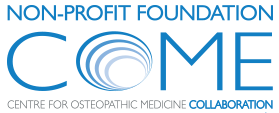Learning Environment, Preparedness and Satisfaction in Osteopathy in Europe: The PreSS Study
Objective
1) to assess the preparedness to practice and satisfaction in learning environment amongst new graduates from European osteopathic institutions; 2) to compare the results of preparedness to practice and satisfaction in learning environment between and within countries where osteopathy is regulated and where regulation is still to be achieved; 3) to identify possible correlations between learning environment and preparedness to practice.
Method
Osteopathic education providers of full-time education located in Europe were enrolled, and their final year students were contacted to complete a survey. Measures used were: Dundee Ready Educational Environment Measure (DREEM), the Association of American Medical Colleges (AAMC) and a demographic questionnaire. Scores were compared across institutions using one-way ANOVA and generalised linear model.
Results
Nine European osteopathic education institutions participated in the study (4 located in Italy, 2 in the UK, 1 in France, 1 in Belgium and 1 in the Netherlands) and 243 (77%) of their final-year students completed the survey. The DREEM total score mean was 121.4 (SEM: 1.66) whilst the AAMC was 17.58 (SEM:0.35). A generalised linear model found a significant association between not-regulated countries and total score as well as subscales DREEM scores (p<0.001). Learning environment and preparedness to practice were significantly positively correlated (r=0.76; p<0.01).
Discussion
A perceived higher level of preparedness and satisfaction was found amongst students from osteopathic institutions located in countries without regulation compared to those located in countries where osteopathy is regulated; however, all institutions obtained a ‘more positive than negative’ result. Moreover, in general, cohorts with fewer than 20 students scored significantly higher compared to larger student cohorts. Finally, an overall positive correlation between students’ preparedness and satisfaction were found across all institutions recruited.







